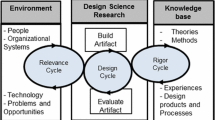Abstract
In the evolving paradigm known as ‘agile operations’, conceptual and visionary descriptions are progressively becoming abundant. Rigorous treatments leading to operable solutions, on the other hand, are scarce and in need of development. Formation of partnerships ranging from rudimentary supplier type relationships to strategic alliances comprise an aspect of agile operations called the ‘virtual factory’ in the new paradigm. We develop a model to determine an optimal alliance of partners for executing a given project composed of a set of activities and their precedence network. Possible alliances amongst partners are given in a ‘partnership matrix’, induced by a set of operating characteristics for each partner. Using the above information we formulate the problem of assigning project activities to eligible partners so that every pair of adjacent activities is assigned to a pair of compatible (or allied) partners. Our objective is to minimize the project duration. Lower bounds and heuristic algorithms are developed for the above problem, that take advantage of a mathematical formulation and the structure of the problem. Supporting computational experiments are also reported.
Similar content being viewed by others
References
Byrne, J. A. (1993). The virtual corporation. Business Week, 98, February 8.
Even, S. (1973). Algorithmic combinatorics. New York: Macmillan. Chap. 10.
Garey, M. R., & Johnson, D. S. (1979). Computers and intractability. San Francisco: W.H. Freeman.
Goldman, S., & Preiss, K. (Eds.). (1991). An industry-led view, 21st century manufacturing enterprise strategy (Vol. 1).
Goldman, S., & Preiss, K. (Eds.). (1992). Infrastructure, 21st century manufacturing enterprise strategy (Vol. 2).
Hall, N. G., & Posner, M. E. (2001). Generating experimental data for computational testing with machine scheduling applications. Operations Research, 49(6), 854–865.
Meredith, J. R., & Mantel, S. J. Jr. (1995). Project management: a managerial approach. New York: Wiley.
Morton, T. E., & Pentico, D. W. (1993). Heuristic scheduling systems. New York: Wiley.
Papadimitriou, C. H., & Steiglitz, K. (1982). Combinatorial optimization: algorithms and complexity. Englewood Cliffs: Prentice-Hall.
Preiss, K. (1995). Models of the agile competitive environment. In Agility forum V, PA95-03.
Sleator, D. D. (1980). Unpublished Ph.D. Dissertation, Stanford University.
Vairaktarakis, G. (2003). The value of resource flexibility in the resource constrained job assignment problem. Management Science, 49(6), 718–732.
Author information
Authors and Affiliations
Corresponding author
Rights and permissions
About this article
Cite this article
Vairaktarakis, G.L., Hosseini, J.C. Forming partnerships in a virtual factory. Ann Oper Res 161, 87–102 (2008). https://doi.org/10.1007/s10479-007-0302-1
Received:
Accepted:
Published:
Issue Date:
DOI: https://doi.org/10.1007/s10479-007-0302-1




